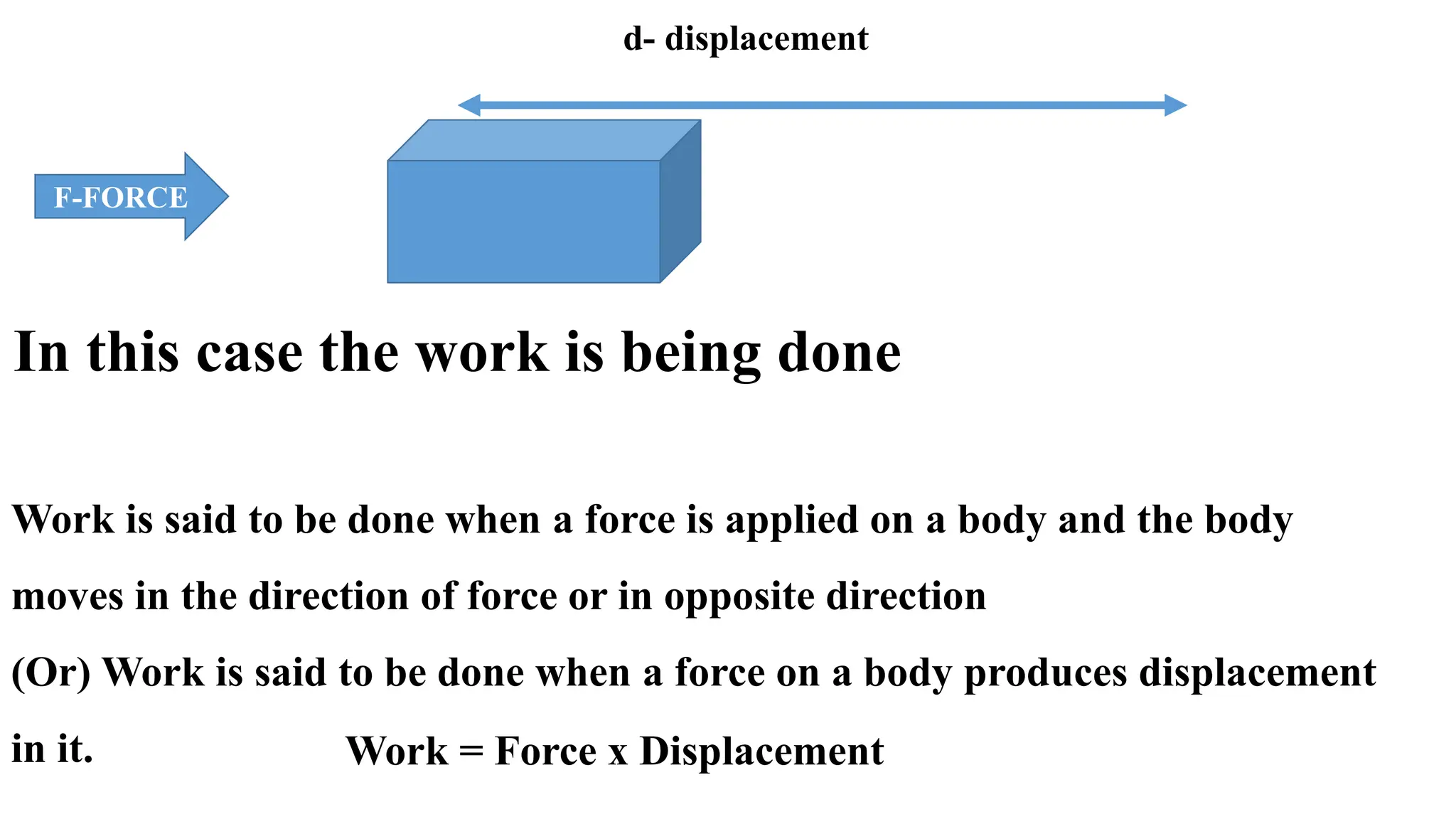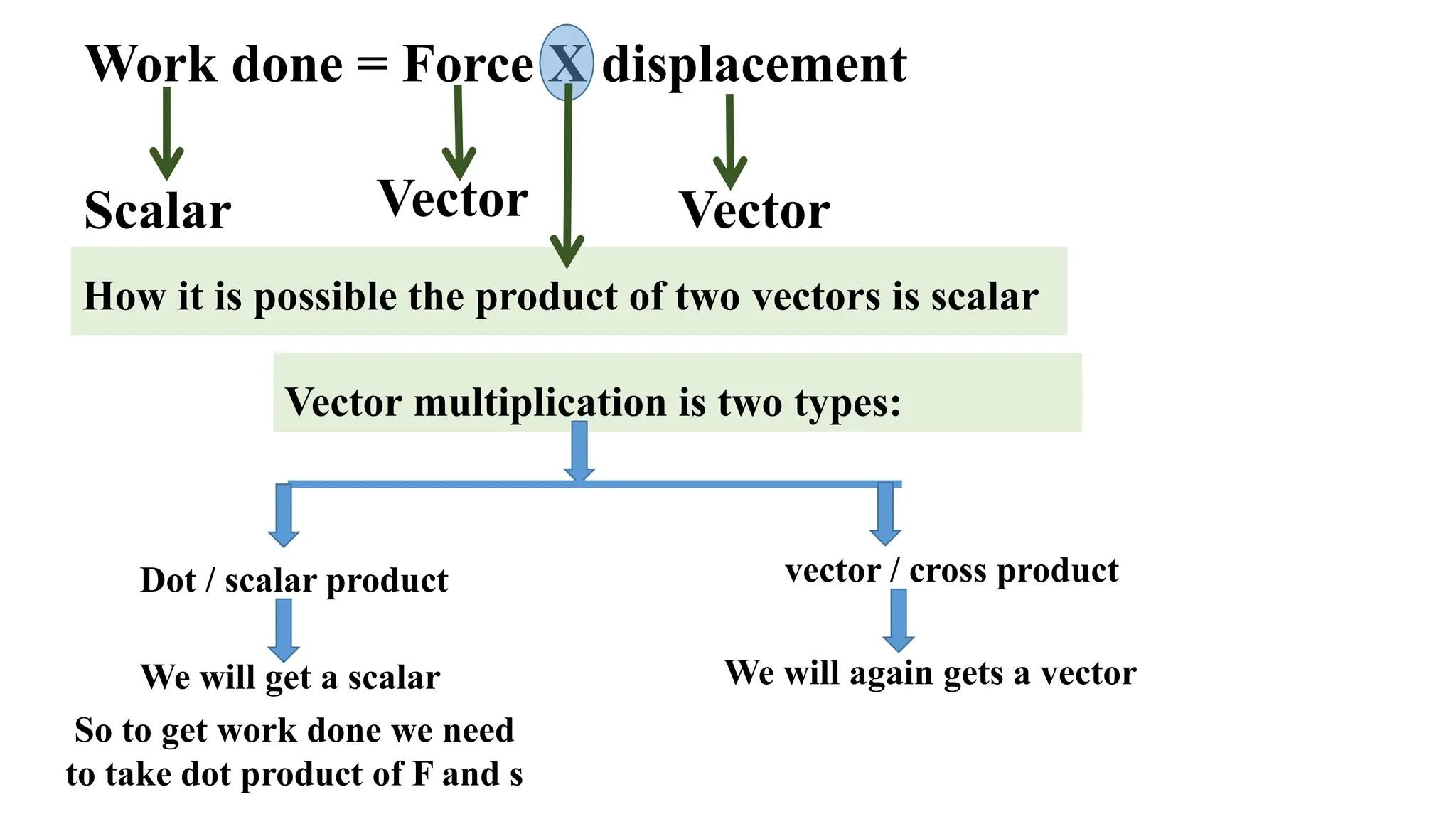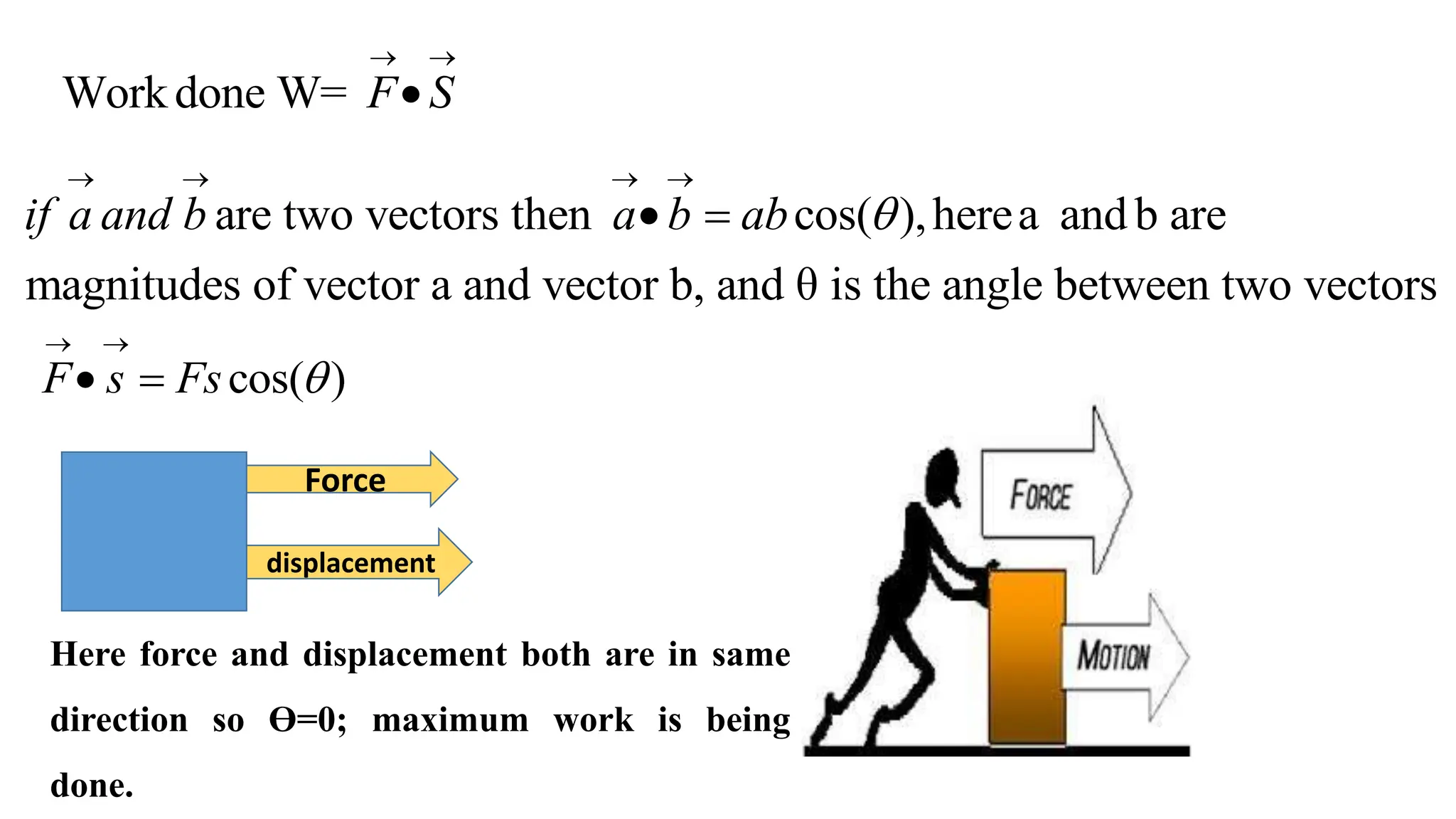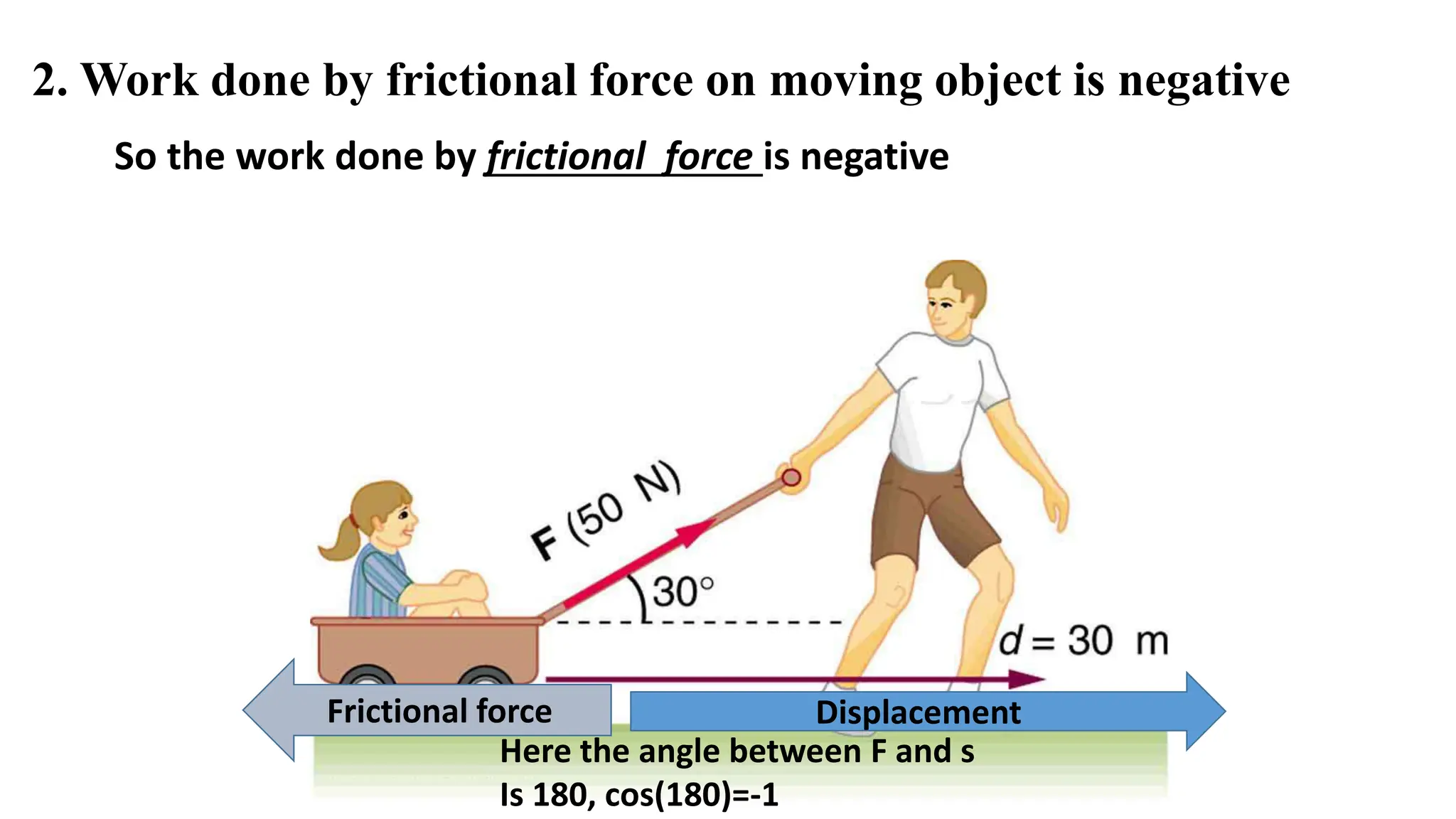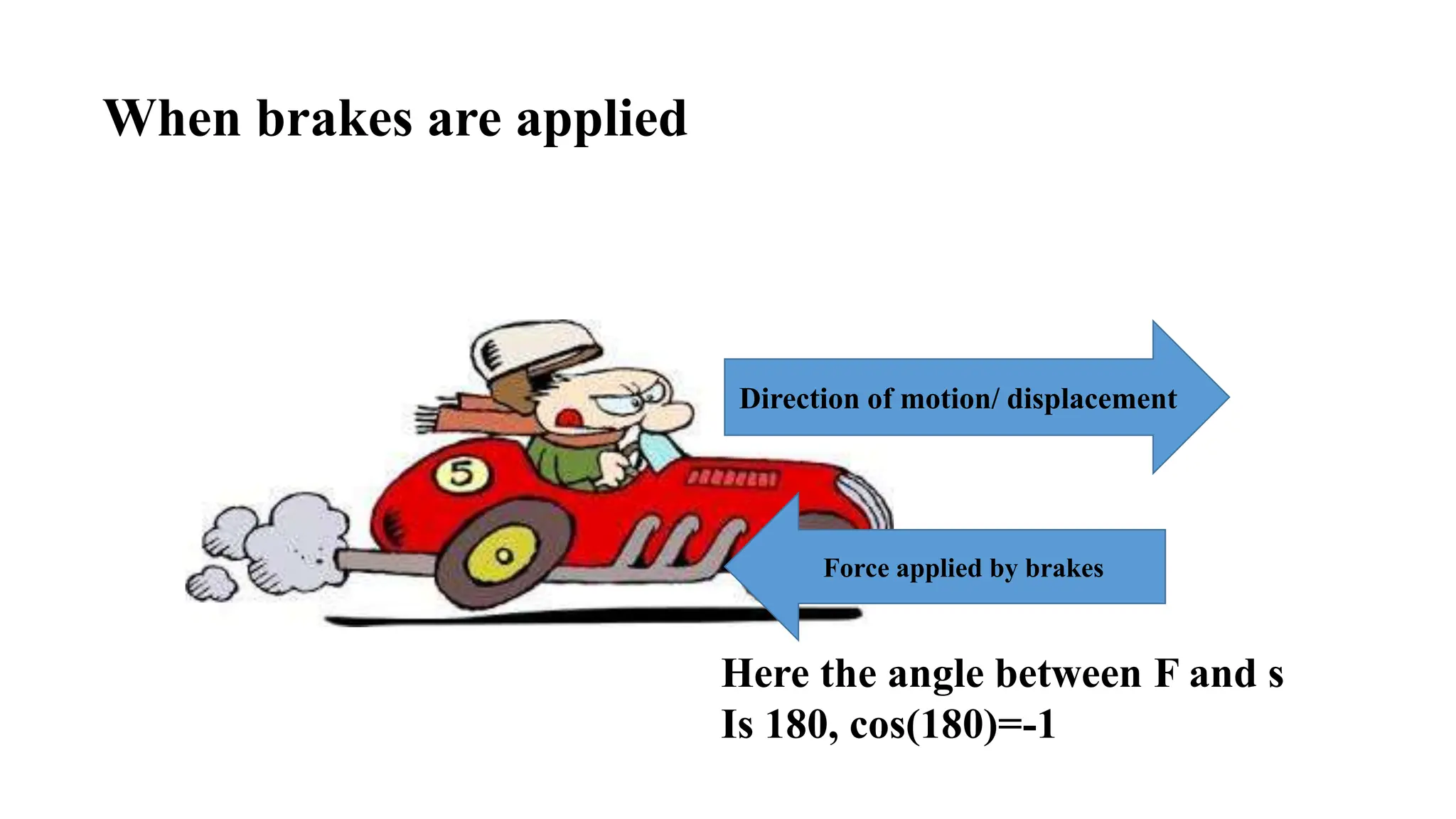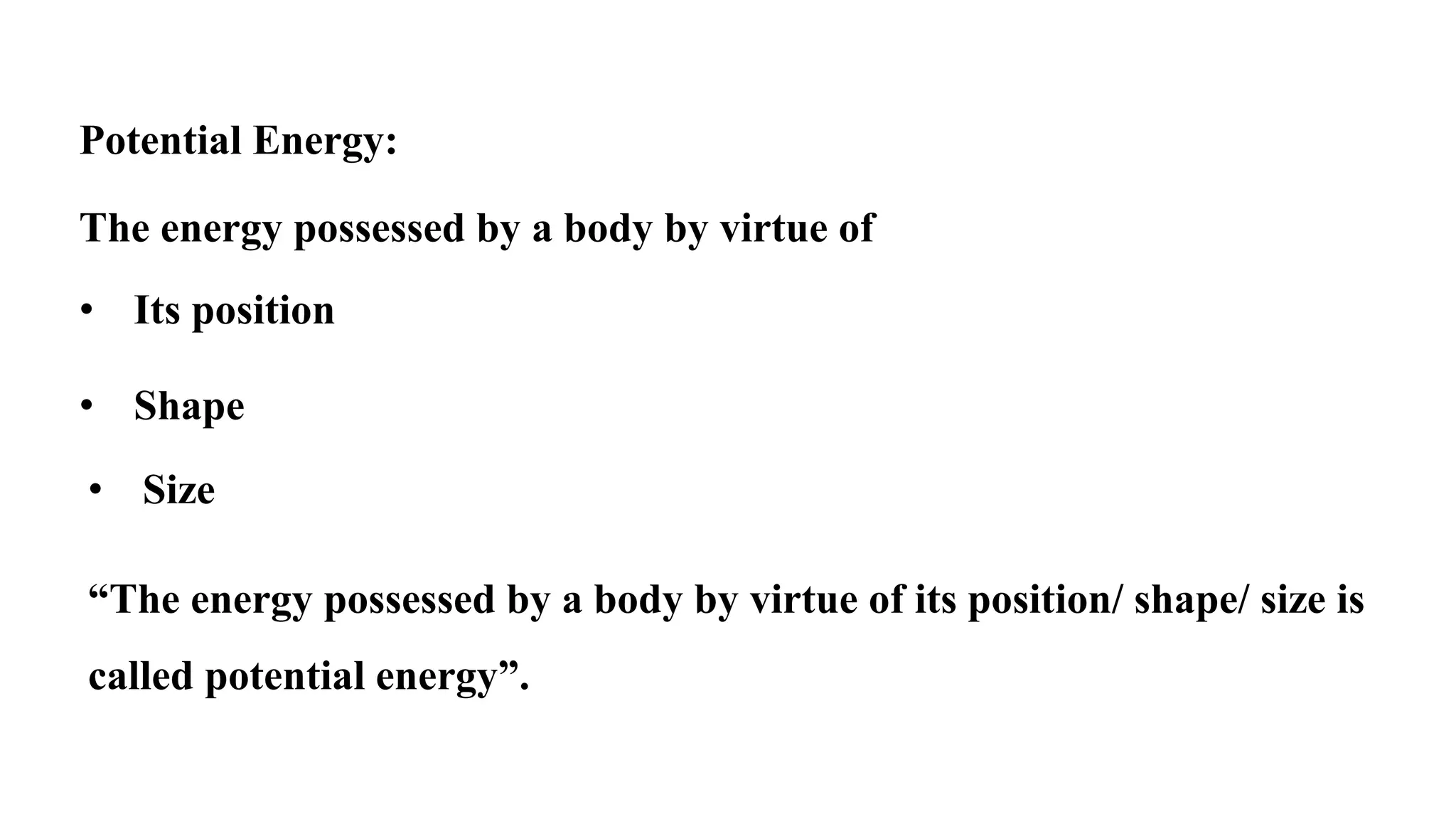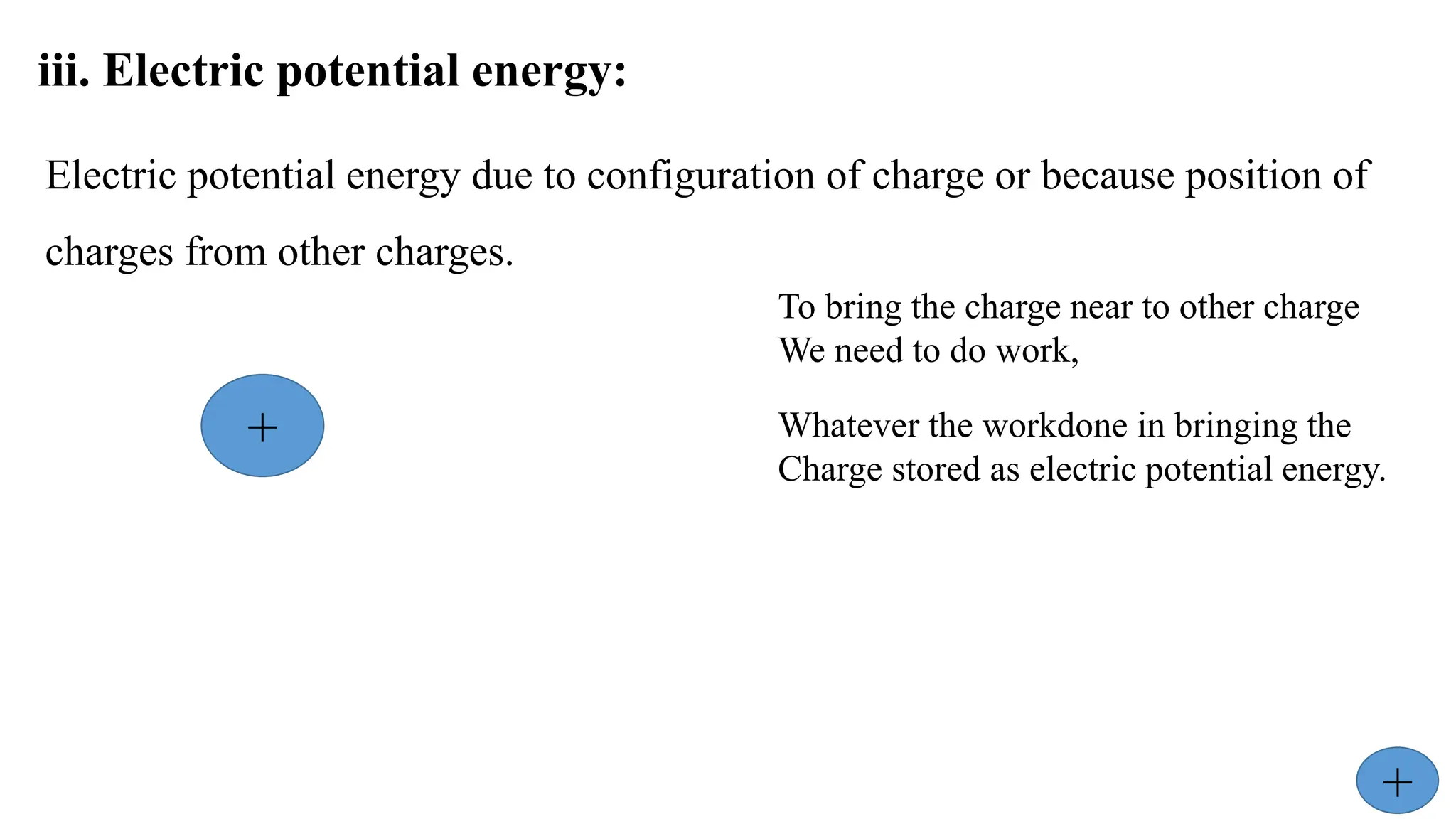The document explains the concepts of work, energy, and power, detailing how work is defined as the product of force and displacement, with specific conditions for its calculation. It discusses the different types of potential energy and how the angle between force and displacement affects work done, categorizing it into positive, negative, and zero work. Additionally, it highlights the relationship between units of work in the SI system and describes various examples illustrating these principles.



